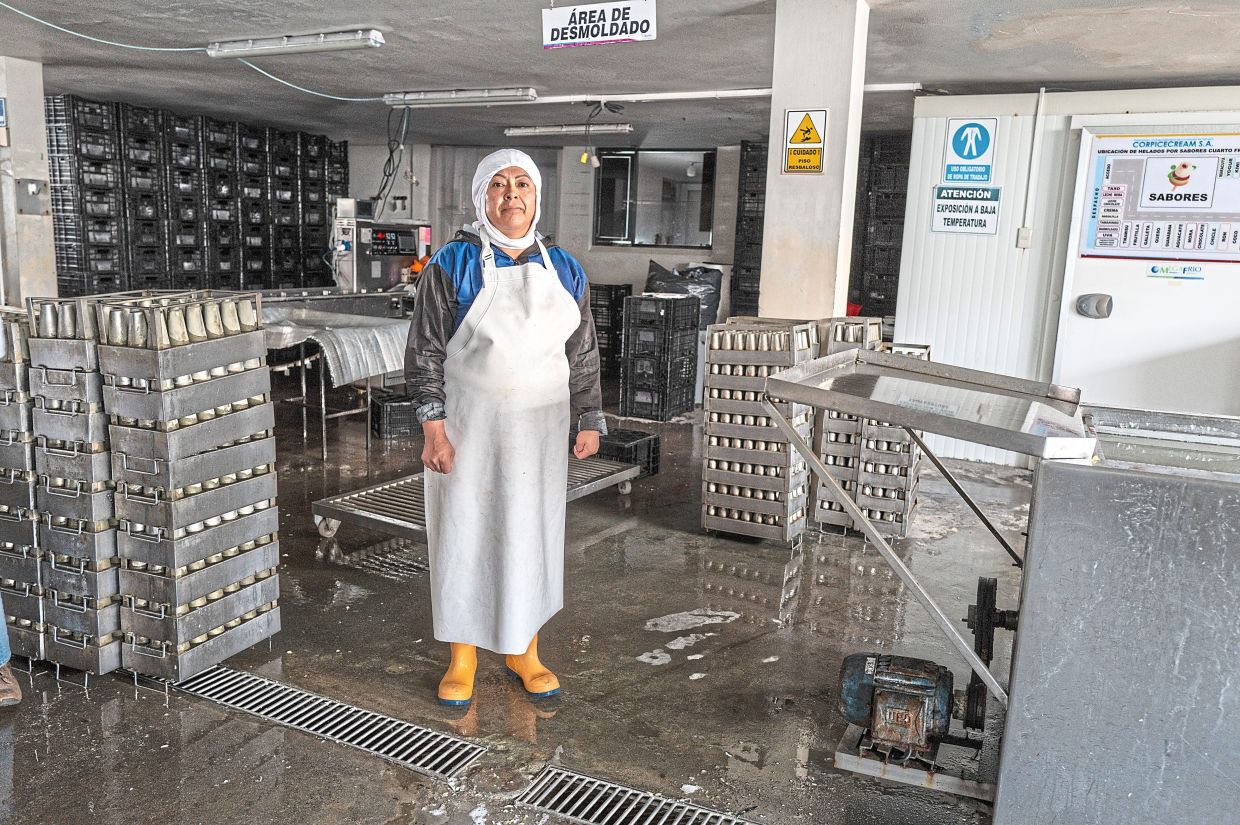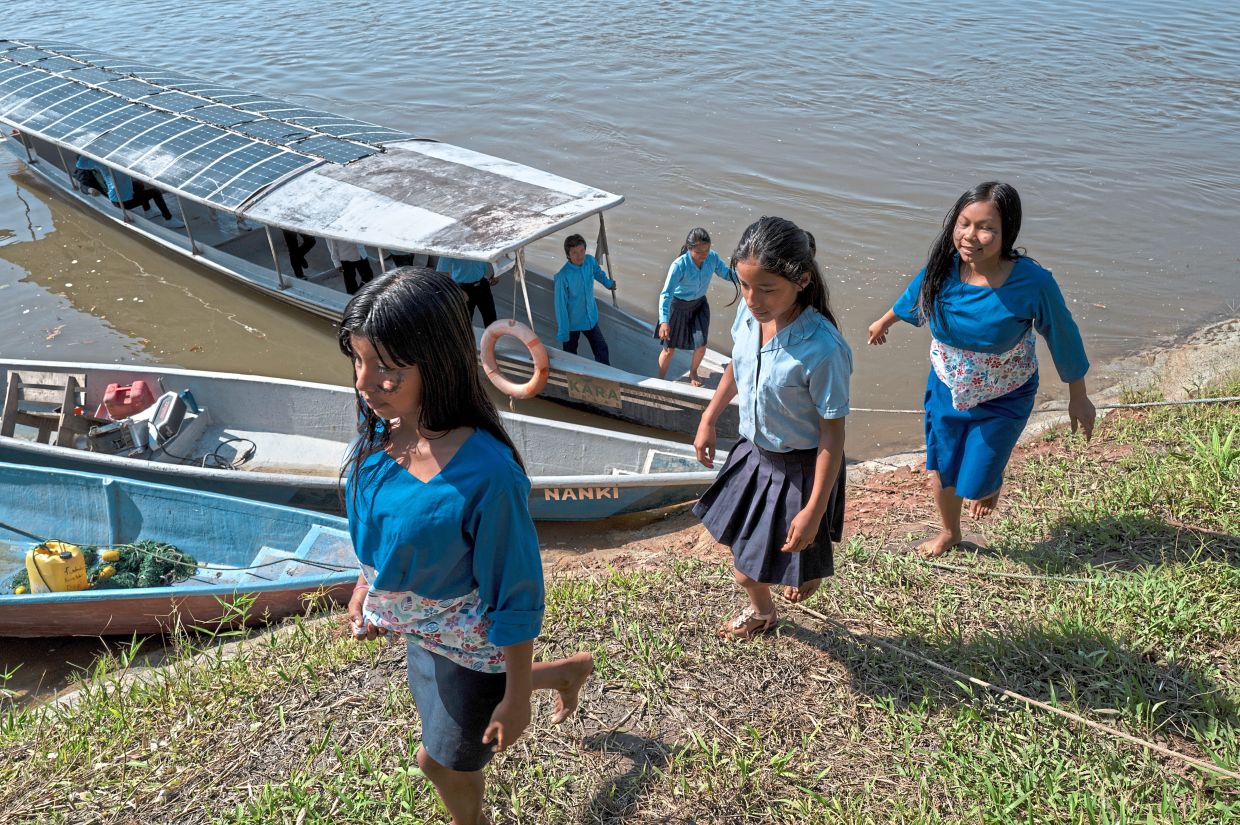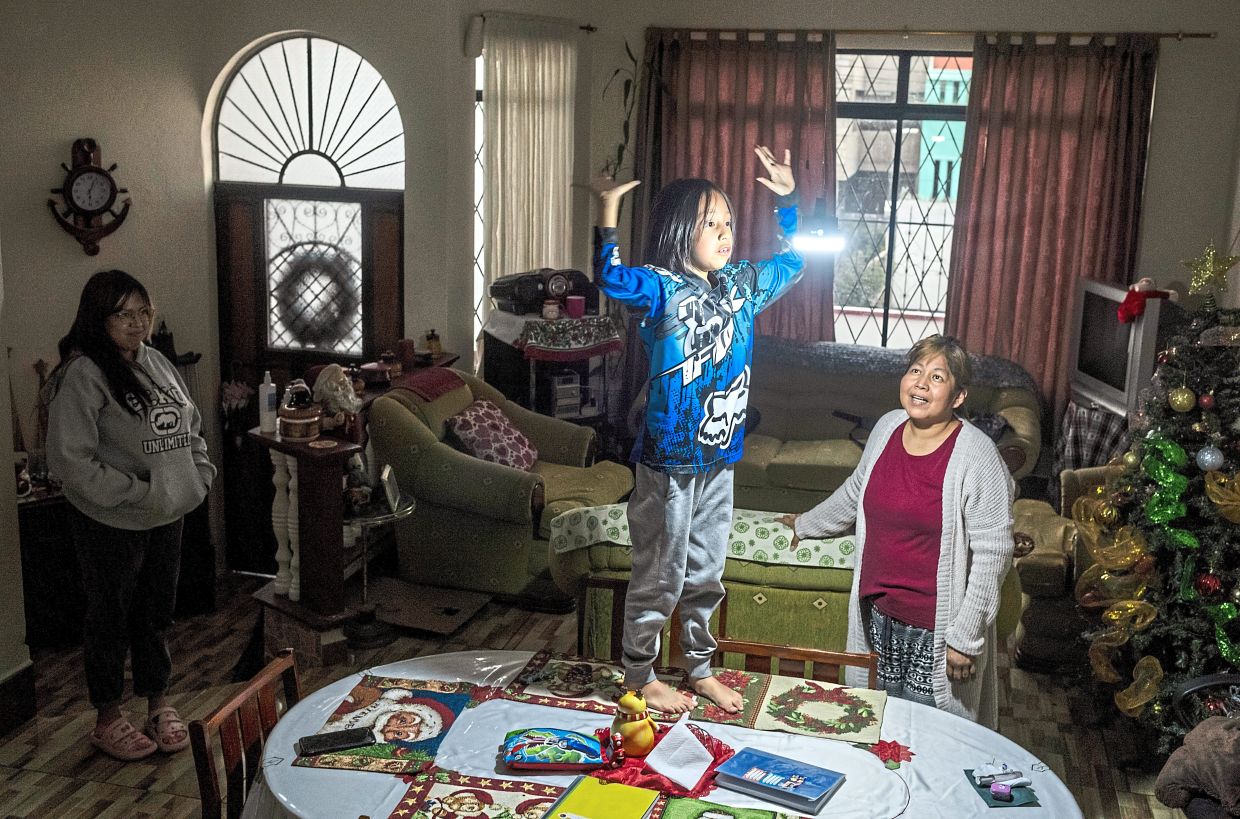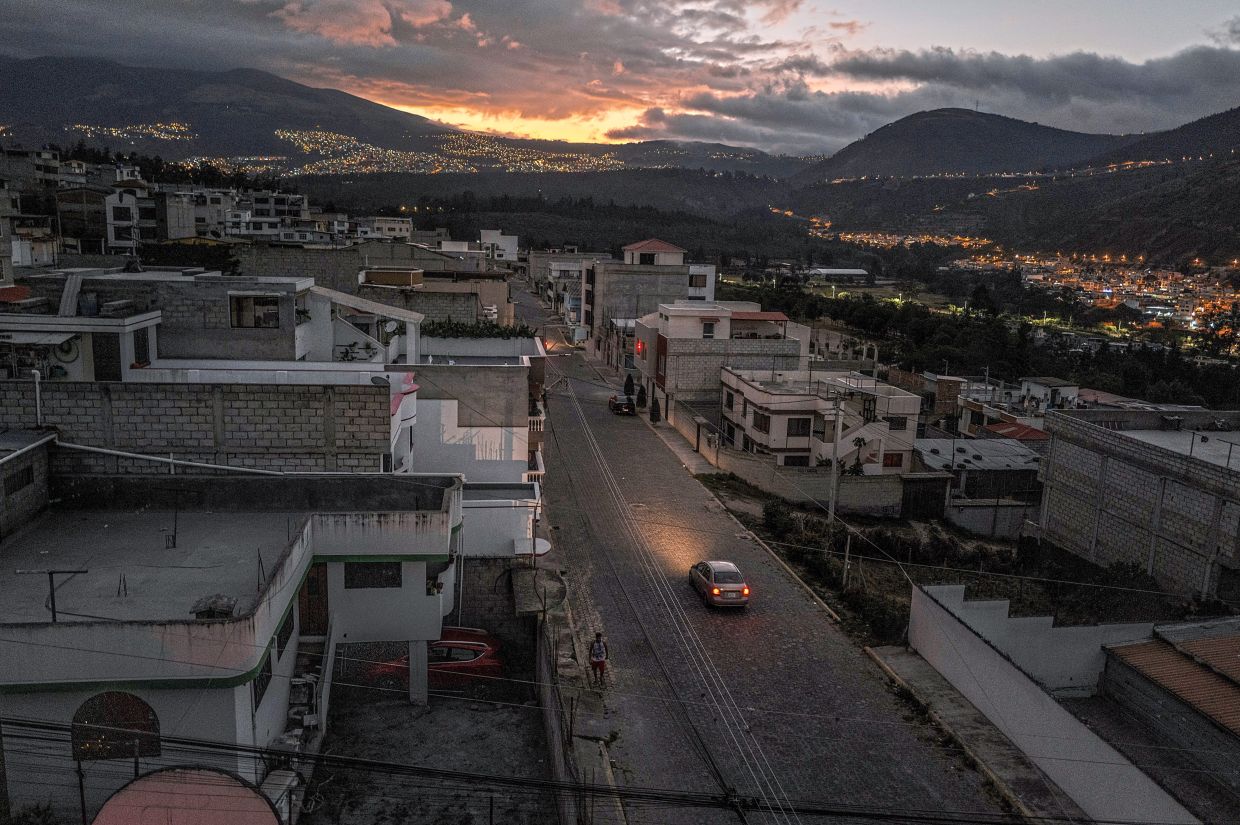An aerial view of the Coca Codo Sinclair dam in Ecuador. An extraordinary drought has drained Ecuador’s rivers and reservoirs, leading to power outages of up to 14 hours. Some fear this is the beginning of a larger global crisis. — ©2025 The New York Times Company
A DECADE ago, Ecuador embarked on a bold transition to hydroelectric power, aiming to harness its abundant rivers to meet growing energy demands.
The government envisioned a prosperous future, where sustainable energy would drive economic expansion, lifting millions from poverty.
Today, however, Ecuador finds itself grappling with the devastating consequences of climate change, as severe droughts disrupt its power grid and leave the nation reeling.
Since September, Ecuadorians have endured daily power cuts lasting up to 14 hours. Streets plunge into darkness, neighbourhoods lose water supply, and even internet and mobile services vanish.
Businesses have suffered significantly, with one industry group estimating losses of US$12mil per hour of outages.
“My country is adrift,” lamented Gabriela Jijon, an ice cream shop owner near Quito.
She is one of many small business owners struggling to keep operations afloat in a nation increasingly reliant on an unpredictable power grid.
Ecuador’s plight is not isolated. Around the globe, countries dependent on hydroelectricity are grappling with similar challenges.
Severe droughts have affected hydropower output in places like Zambia, China, and Norway, revealing the fragility of water-based energy systems in a warming world.
More than one billion people live in countries where over half of their energy comes from hydroelectric sources, according to Ember, a global energy research institute.
Yet, as the planet warms and extreme weather becomes more frequent, scientists warn that hydropower may no longer be a reliable energy solution.
A 2022 study published in Water found that over a quarter of hydroelectric dams are located in regions with medium to extreme water scarcity risks by 2050.
Ecuador’s current energy crisis serves as a grim warning of what may lie ahead for other nations.
While some countries, such as Brazil and the United States, have backup plans to supplement hydropower with fossil fuels or renewable energy, Ecuador lacks such robust contingency measures.
Energy experts, including Nicolas Fulghum of Ember, caution that the costs of diversifying energy sources are prohibitive for many nations, leaving them vulnerable to worsening climatic conditions.
Ecuador’s shift to hydropower began in earnest under President Rafael Correa in 2007.
His administration, buoyed by Chinese loans, invested billions in hydroelectric projects, including the US$2.2bil Coca Codo Sinclair dam. The initiative aimed to reduce dependence on fossil fuels and position Ecuador as a leader in sustainable energy.
However, the projects were plagued by allegations of corruption, design flaws and mismanagement.
While Correa’s government expanded energy capacity by 60%, critics argue that an overreliance on hydropower left the nation ill-prepared for the unpredictable impacts of climate change.
In an interview from Belgium, where he resides in exile, Correa dismissed climate change as the primary cause of Ecuador’s energy crisis.
Instead, he blamed subsequent administrations for neglecting maintenance and failing to diversify energy sources.
His successors, Lenin Moreno and Guillermo Lasso, pointed to economic constraints, such as falling oil prices and the Covid-19 pandemic, which hindered their ability to invest in energy infrastructure.
The energy crisis has plunged Ecuador into uncertainty, with far-reaching effects on daily life.
Educational institutions like the Triangle Foundation in Quito, which supports students with Down syndrome, face budget shortfalls as the cost of running diesel generators skyrockets.
Families reliant on the programme for opportunities now fear being priced out.
In Salcedo, a town renowned for its fruit-layered ice cream pops, businesses like Helados de Salcedo have lost thousands of dollars in melted inventory.
General manager Paco Hinojosa estimated that the company could survive for only a few more months under current conditions.
For Ecuador’s poorest, the situation is even more dire.
In northern Quito, 19-year-old Katherine Mantilla cradles her newborn daughter, Kenya, who requires oxygen for breathing difficulties.
Power outages have left Mantilla unable to afford refills for Kenya’s oxygen tank or even basic necessities like a flashlight.
“If she stops breathing, if she changes colour, how will I see it?” Mantilla asked, her fear palpable in the dim light of her home.
Ecuador’s experience underscores the need for countries to diversify their energy portfolios, investing in alternative sources like wind and solar.
Brazil and Chile provide models for how to mitigate reliance on hydropower by integrating cleaner, more resilient energy systems.
President Daniel Noboa, facing re-election, has promised to end power cuts by purchasing energy from neighbouring Colombia.
Yet experts warn that such measures offer only temporary relief. Without significant rainfall or a long-term strategy to diversify energy production, blackouts could persist for years.
The stakes are high. Ecuador, once celebrated for its progress in reducing poverty, now risks reversing those gains as the energy crisis disrupts livelihoods and fuels instability.
The lesson is clear: hydropower alone cannot meet the challenges of a warming world. Nations must act decisively to build adaptable, sustainable energy systems before the next crisis strikes. — ©2025 The New York Times Company






